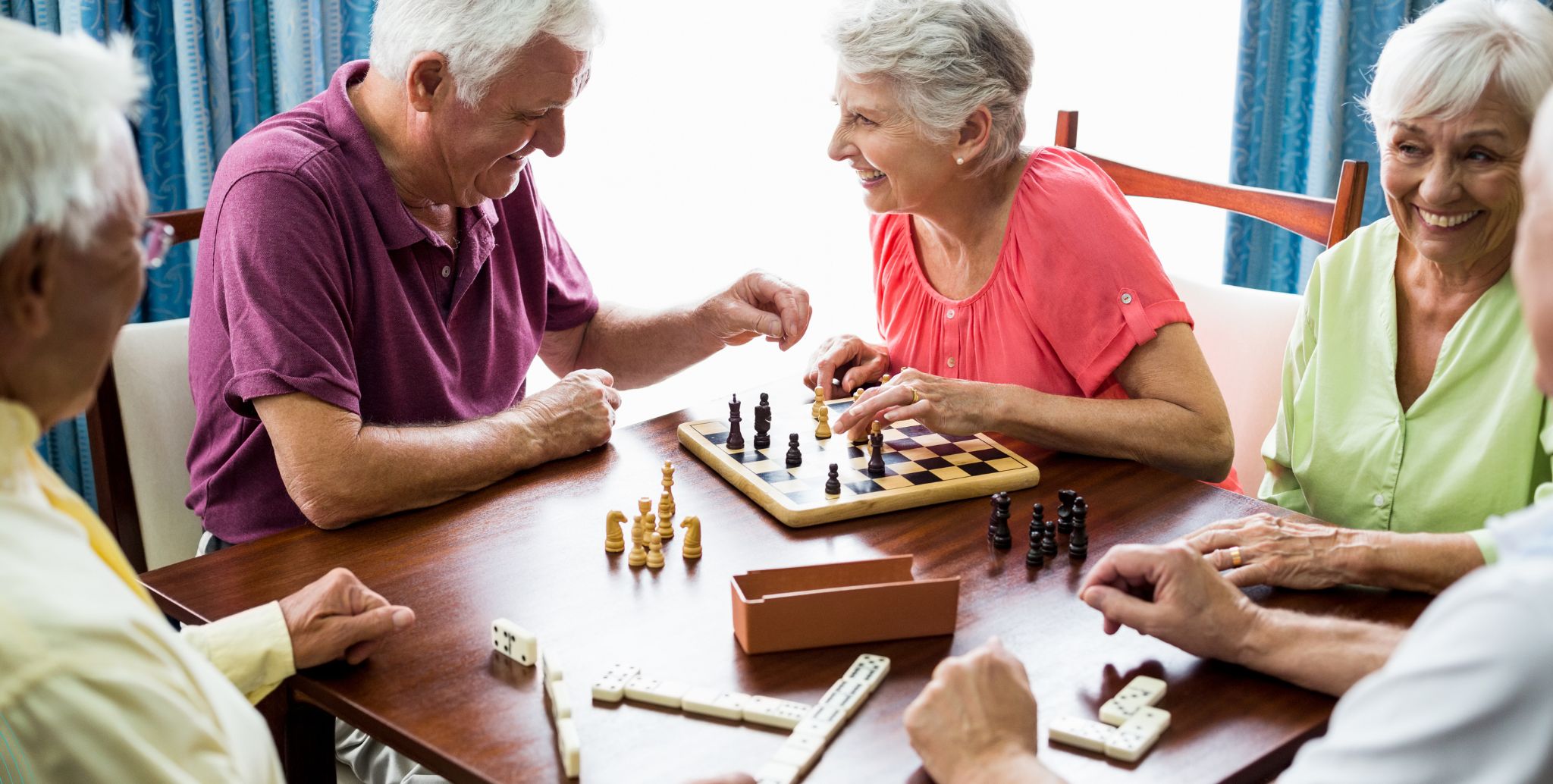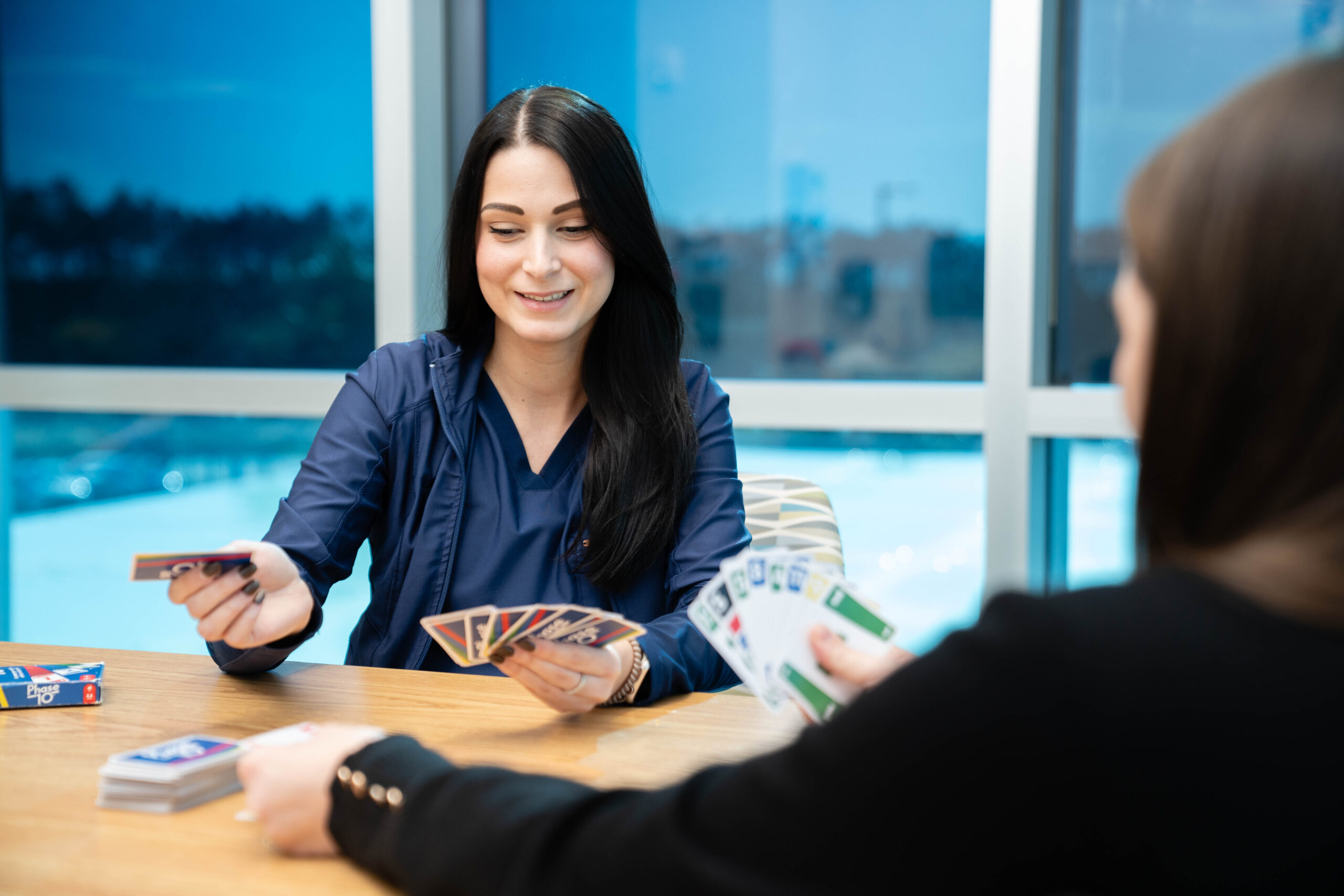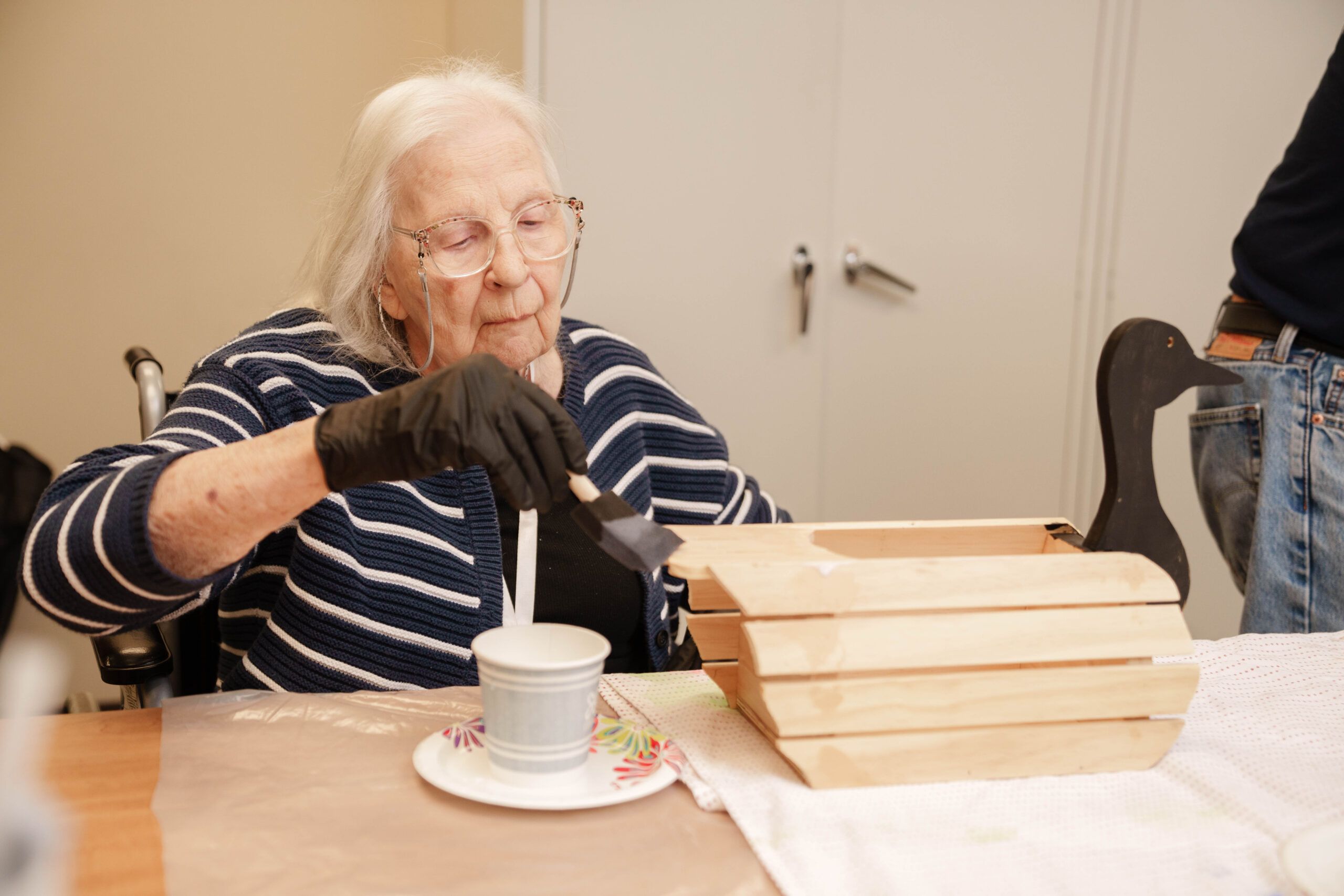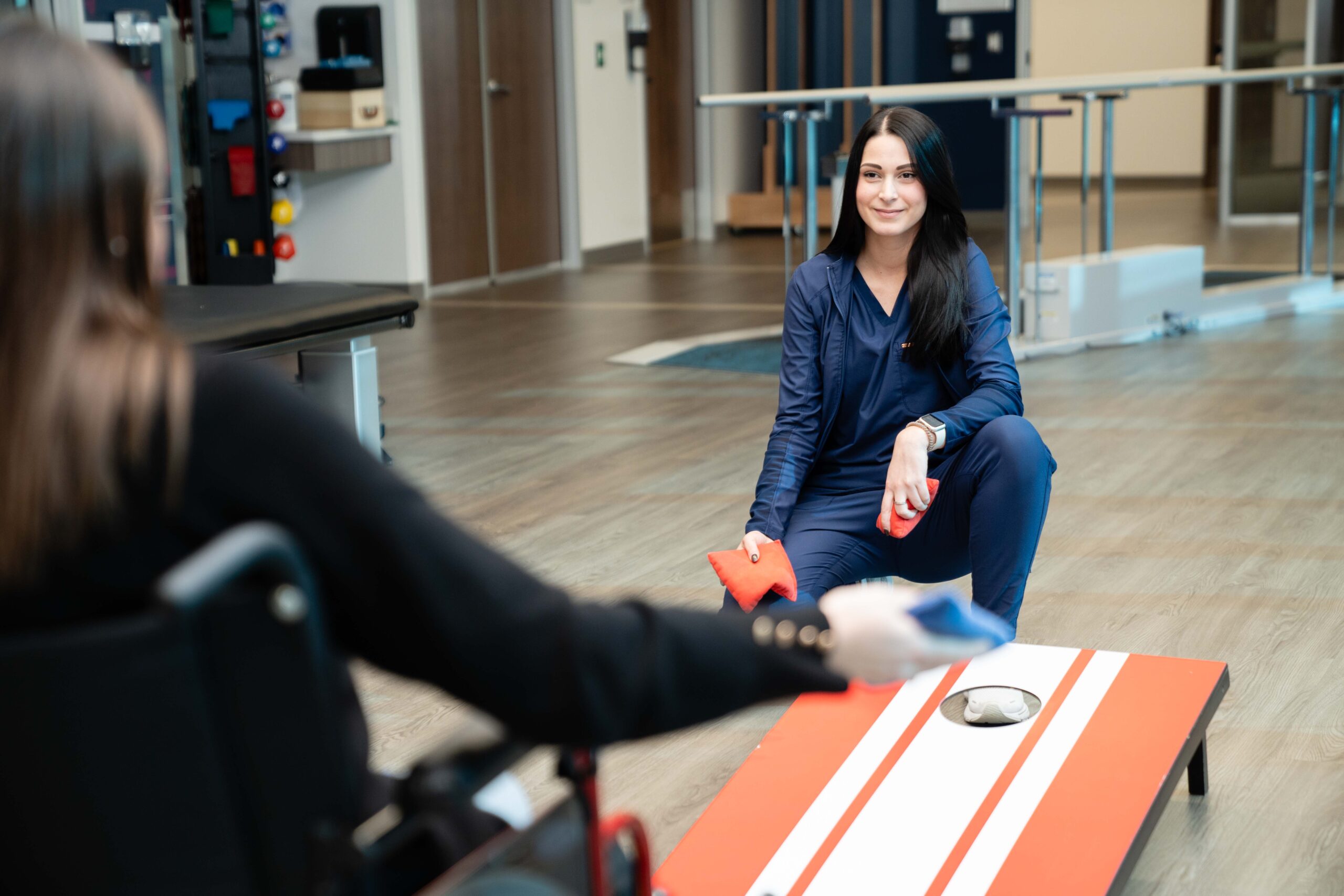Fine Motor Skills Activities for Adults: Advice From a Recreational Therapist

Back to physical health resource hub
Most adults can benefit from improving their fine motor skills. You shouldn’t wait until you’ve had a traumatic injury or illness or lost usage of your hand to work on keeping these skills sharp.
Strengthening fine motor muscles – especially as you age – is key to being able to continue to participate in the social and recreational activities you enjoy over time.
Specialized therapists, known as recreational therapists, help people regain their fine motor skills – especially after a brain injury or stroke. They use recreational activities as therapy to help patients regain fine motor skills in areas of life that include fun and socialization.
If you are interested in gaining increased dexterity in your everyday life through fun therapeutic activities, there are plenty of engaging activities you can do at home or under the guidance of a recreational therapist.
How to Keep Your Fine Motor Skills Sharp
Certified Therapeutic Recreation Specialist Kayla Ogle, who works as a recreational therapist at Brooks Rehabilitation Hospital — University Campus, stresses that to keep fine motor skills in tip-top shape, you’ve got to use them, or you’ll lose them.
“Practice and consistency are key. The more you participate in your chosen activity, the easier or more natural it will feel,” she explained.
Ogle’s suggestions include:
- Find ways to make favorite activities more challenging – like using your least dominant hand or pushing through minor fatigue to get stronger.
- Try something new, like a new hobby. A good idea is to join a friend or family member in trying their favorite activity so they can guide you along the way. Hand-over-hand – where their hand guides your hand through the task – is a good way to learn the proper technique as well as develop muscle memory.
- Help around the house. Lots of chores – like folding laundry, washing dishes, etc. – can help build and maintain fine motor skills. For those who like to cook but find it difficult, there are many adaptive cooking equipment options, such as built-up grips and one-handed equipment – to make cooking easier.
- Practice adaptive sports at your local gym or rec center. Many of these facilities offer resources to make play easier for those with physical disabilities.
Fine Motor Skills Activities to Do and Why
You can build or maintain your fine motor skills using a variety of fun activities at home.
If a task is too difficult to do at first, you may be able to modify it by using adaptive equipment that makes the task easier. As skills improve, adaptive technology may no longer be needed.
Here are a few suggestions:
- Card games, board games and puzzles. These are easily accessible activities that anyone can do at home. They require fine motor skills to manipulate small items, and they can provide social interaction as well.
- Gardening. Wanting to enjoy some sunshine? Gardening provides numerous uses of fine motor skills examples, from grasping and manipulating hand gardening tools, spreading soil with your hands, placing seeds, pruning and more.
- Arts and crafts: With the wide variety of arts and crafts to enjoy, there’s something for everyone – and all require fine motor skills at different levels. Painting, drawing, threading beads, sewing, crocheting or knitting, molding clay, scrapbooking, cutting and even taking photos all require you to use your hand, wrist and finger muscles in unique ways.
- Video games: Wii Sports is a favorite at Brooks because it requires patients to hold the remote, press buttons and move their arms. The XBOX offers adaptive controls and switches that can be tailored to your abilities. Or you can play using your iPad, phone or computer.
- Sports and outdoor activities: Fishing, foosball, billiards and yard games are a few examples of ways to stay active and work on fine motor skills.
- Get made up: Doing hair, nails and makeup all require the use of fine motor skills and can be a fun way to try out new looks while strengthening your fine motor skills.
- Play the piano: Learning to play basic songs on the piano is a way to improve your hand precision while developing a new skill.

Ogle adds that all of these activities (and more) can be modified to be easier or more difficult depending on your specific needs.
For those who have experienced a stroke or brain injury, Ogle stresses that it’s important to consult with a primary care team before taking on too difficult a task without guidance.
“When coupled with the expertise of other therapeutic specialties – especially occupational therapy — recreational therapy activities can be fantastic supplements to a participant’s routine,” Ogle concluded.
Why Improving Fine Motor Skills is Important for Adults
Fine motor skills are those specific little movements that we subconsciously make with our hands every day. We need fine motor skills to complete daily self-care tasks, like dressing or brushing our teeth, as well as other tasks, like writing or changing channels on TV.
As we age, we naturally start to lose muscle mass and strength – including the muscle groups in our hands, wrists, fingers, and forearms (and feet and toes). In addition to strength, using these skills also requires the ability to control and coordinate movements, subconscious awareness of how to perform the tasks, and precision.
Those who have experienced a stroke or a brain or spinal cord injury – as well as other causes of motor function loss like arthritis, neuropathy, certain neurological conditions (e.g., Parkinson’s, Huntington’s, cerebral palsy, and multiple sclerosis), and some other rare conditions – may also need help improving fine motor skills.
Just like with other parts of the body, the muscle groups related to fine motor skills need exercise to build strength. Recreational therapy is a professional form of therapy designed to help patients regain or improve fine motor skills through enjoyable therapeutic recreational activities.
Many of these therapeutic recreational activities can also be done at home, and there are plenty of ways to build your fine motor skills while having fun.

How Recreational Therapists Help with Improving Fine Motor Skills
Recreational therapy activities for adults are led by professionals who help patients build dexterity and skill development using activities in a purposeful way to affect physical, social, emotional and/or cognitive change.
“Although our area of expertise surrounds an area that everyone loves – fun, games, leisure – we are still purposeful in the interventions we select to address our patients’ deficits,” explains Ogle.
Recreational therapists at Brooks Rehabilitation’s hospitals use the “APIED” process for improving fine motor skills. APIED stands for:
- Assess the patient
- Make a Plan
- Intervene with purposeful activities
- Evaluate progress and
- Document
By working with each patient one-on-one, Brooks team members can get to know each patient and assess their leisure goals, strengths and interests.
“Most people are surprised at the plethora of skills they can address and develop by participating in everyday activities,” Ogle explained. These include activities they enjoyed before their need for therapy or new ones they can learn.

Ogle stresses that part of her role in improving fine motor skills is helping patients make adaptations so they can learn ways to participate in activities they used to love doing. And if those activities no longer bring as much joy, they can introduce new recreational therapeutic activities for adults.
“Something seemingly simple such as playing a card game with family could be a task that seems daunting to someone with fine motor deficits,” Ogle explained. “With adaptations, we can reconnect our patients to activities they enjoy, as well as people they enjoy doing it with.”
Using a game of cards as an example, a patient may not be able to hold or manipulate the cards at first. To adapt, the patient can start out using a wooden card holder that sits on the table, allowing the person to focus on simpler tasks at first – like pinching and releasing a single card at a time.
With progress, the patient can move up to a single-card holder, then to holding cards in both hands together. There are also rubber tips that can be added to fingertips to make cards easier to grasp.
How Brooks Can Help
If you or a loved one suffered a traumatic injury or illness, Brooks’ world-class rehabilitation solutions and team of experts are here to help. Get more information here.